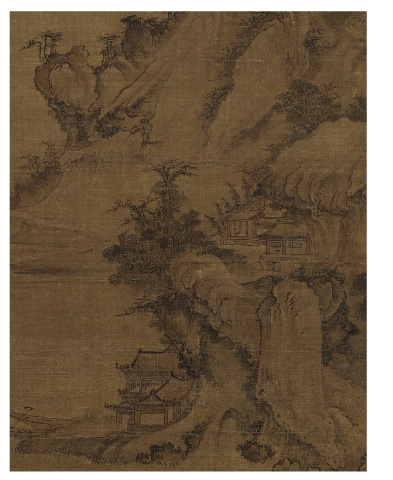Page 433 - japanese and korean art Utterberg Collection Christie's March 22 2022
P. 433
The oddly-shaped rocky cliff that dominates in the middle ground jagged contour line of the rocks and the moderate use of short-
is an obvious trace of Guo Xi’s influence. This pictorial motif is line texture strokes indicates this work’s close association with the
shared by the typical 16th century landscape paintings of the Joseon early danseon jeomjun. The spatial recession and representation
dynasty in the style of Guo Xi, including Gathering of Government of the atmospheric perspective is achieved through the effective
Officiasl from the Office of the Censor-General in 1540 ( National manipulation of various tones of ink washes in various tones;
Museum of Korea), Gathering of Government Officials from the however, the intervals of space between foreground and background
Ministry of Military Affairs in 1541 ( National Museum of Korea), are reduced, and the pictorial elements in three planes are more
and Landscape inscribed by Hakpo. Gathering of Government smoothly connected than in landscapes paintings from the second
Officials from the Ministry of Punishment around 1546 (Treasure half of the 16th century landscape painting. In addition to the early
no. 1616) reveals an even closer connection to this painting in Joseon trend, the enlarged scale of the architecture in this painting
terms of its rock formations, arrangement of pictorial motifs, and shows a close connection with the Ming style, as exemplified by Li
brushstrokes. This painting of scholars’ gathering, by employing Zai’s (d.1431) Mountain Village (Palace Museum Beijing).
vast space between the pictorial elements, conveys a sense of
expansiveness. It employs a bisected “one-sided composition” by The scroll was once misidentified as a Ming landscape, as indicated
placing empty space on one side and most of the motifs on the by the inscription on its wooden container, “Landscape of the
other. Compared to Landscape Gathering of Government Officials Ming dynasty.” A catalogue card also suggests its Chinese origin.
from the Ministry of Punishment exhibits a certain degree of According to the card, this painting was once included in the
stylization and formatted configuration. In Landscape a stream, inventory of Frank Caro (1904-1980), a New York dealer and
meandering from behind the rocks in the midground, flows into successor of C.T Loo (1880–1957). C.T. Loo was one of the
the foreground. Empty boats moored at the shore, a rustic bridge, most important dealers of Chinese art based in New York City
winding paths lend an idyllic air to the scene. On the riverbank during the first half of the twentieth century. Their clients included
stands a two-storied building complex. renowned private collectors and curators from the Art Institute of
Chicago, the Nelson-Atkins Museum of Art, and the Freer Gallery
The brushstrokes are jagged, with short and stylized lines rendered of Art and Cleveland Museum.
repeatedly along the mountain ridges and surfaces of rocks, which
suggests that this work was painted around the 16th In conclusion, this hanging scroll is a splendid work from the first
half of the 16th century that demonstrates the artistic achievement
century when the short-line texture strokes known as danseon of Joseon painters and their creative interpretation of the Li-Guo
jeomjun became popular. Moreover, the dots applied along the tradition within the Korean context.
Yoonjung Seo
Myongji University, Seoul

